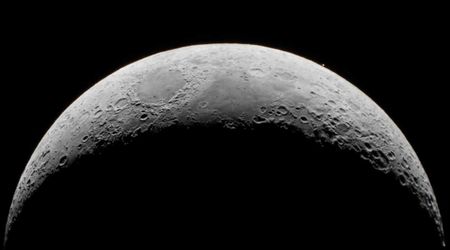NASA is sending astronauts around the Moon sooner than expected — first time in over 50 years

NASA confirmed that the target launch date of Artemis 2 (Artemis II) has been moved up by two months, to February of 2026, according to NASA. Following the successful uncrewed Artemis 1 (Artemis I), the Artemis 2 test flight will be NASA’s first mission with a crew onboard the Space Launch System (SLS) rocket and Orion spacecraft. The acceleration of the mission was revealed during a Crew Dragon launch broadcast by spokesman Derrol Nail, per AmericaSpace. It is indicative of certain delays getting fixed, which were caused by safety concerns and a new vigor in the revival of the flight.

Artemis 2 was initially delayed from November 2024 to September 2025, mainly due to the unexpected loss of large amounts of material from Artemis 1’s heat shield. It was fixed by December, but additional analyses of the spacecraft’s life support system caused another delay, which led to rescheduling of the launch date to April 2026. However, the new date aligns with the mission and all its components being on track. The materials of the SLS rocket were delivered to the Kennedy Space Center, and its twin Solid Rocket Boosters were assembled over the past three months, standing at a height of 177 feet.
The orange core stage, the central element of the rocket, will be placed between the two boosters after a series of inspections. The Orion spacecraft’s four solar array wings were installed recently, and the final components were ready for installation. Moreover, further final inspections are being done on the Orion before it is ready to be processed for launch. The chances of a last-minute problem deplete with tests, though complex crewed spacecraft are known to reveal technical issues during system-level testing. The courage to move up the flight date indicates successful spacecraft tests.

Four astronauts: Mission Commander Reid Wiseman, Pilot Victor Glover, and Mission Specialists Christina Koch and Jeremy Hansen, are preparing for their 10-day journey. The astronauts are engaging with Orion mockups or simulators to practice their portions of the mission profile. NASA’s elite Mission Control team, led by Flight Director Zeb Scoville, helped them to be more precise in their training during an integrated simulation. The crew is currently training on how to execute an emergency return from high Earth orbit if a life support system failure happens on the first day.
Also, the astronauts are reportedly in touch with every aspect of the missions and regularly visit facilities ranging from spacecraft construction to spacesuit manufacturers. It allows them to establish a rapport with the people of the mission, and for the engineers in various fields to know who they are flying out to. The astronauts shall perfect their flight with much enthusiasm, now that the dates are getting near. Since the delay, the Mission Management Team in charge of planning Artemis 2 and managing schedule risks and crew safety has worked hard to reduce the time.

“NASA is working to launch the agency’s Artemis II test flight no later than April 2026,” NASA stated. “We’re looking for ways to enable an earlier launch if possible, potentially launching as soon as February 2026. A February target allows the agency to capitalize on efficiencies in the flow of operations to integrate the SLS (Space Launch System) rocket, Orion spacecraft, and supporting ground systems while maintaining crew safety as the top priority,” it further added. Orion will be fueled and all the elements of the rocket will be mounted, with a completion of all tests expected by December. The crew shall have two dress rehearsals before the flight.









